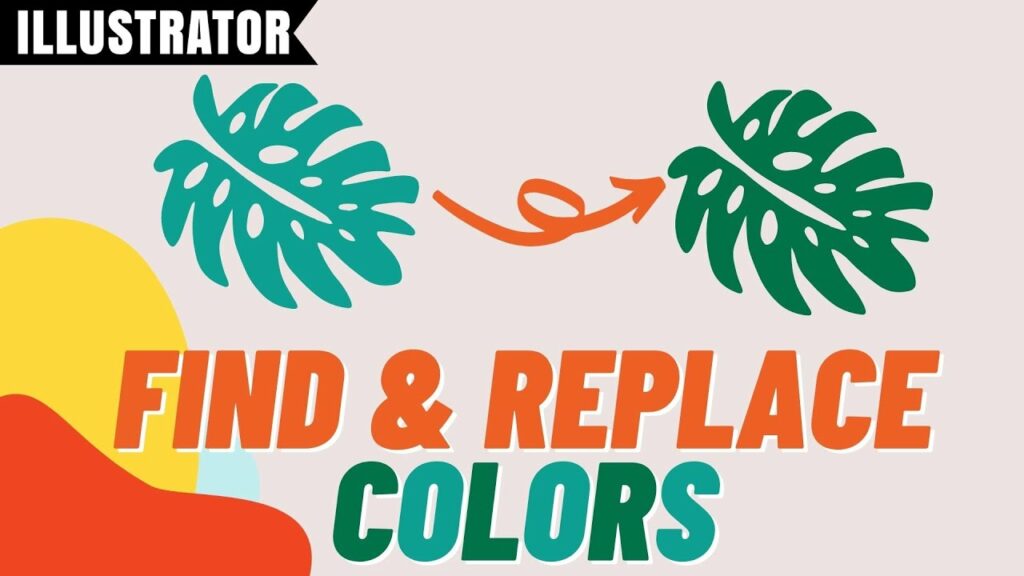Mastering Color Precision in CorelDRAW: A Deep Dive into Finding and Replacing Colors

Introduction: CorelDRAW, a powerhouse in the realm of graphic design, provides a robust set of tools for artists and designers to create visually stunning compositions. A critical aspect of design precision is the ability to find and replace colors seamlessly. In this exhaustive guide, we embark on a comprehensive exploration of the intricate process of finding and replacing colors in CorelDRAW. From the fundamentals to advanced techniques, we delve into the software’s capabilities, strategies, and solutions to empower designers in their quest for color accuracy and efficiency.
I. The Importance of Finding and Replacing Colors: Precision in color selection is paramount in creating cohesive and professional designs. CorelDRAW’s ability to find and replace colors streamlines the design process, allowing for quick adjustments, consistent palettes, and efficient workflows.
A. Workflow Efficiency:
- Time-Saving Techniques: The find and replace colors feature in CorelDRAW proves invaluable in scenarios where rapid adjustments are required across a design. This efficiency is particularly crucial when dealing with large projects or when aligning designs with specific color schemes.
B. Consistency Across Designs:
- Branding and Identity: Maintaining consistent colors is essential for branding and corporate identity. CorelDRAW’s find and replace functionality enables designers to ensure uniformity in color palettes, reinforcing brand recognition across various materials.
II. Basic Techniques for Finding and Replacing Colors: Understanding the fundamental tools and techniques for finding and replacing colors is essential for designers looking to streamline their workflow and achieve precision in color adjustments.
A. Selecting a Specific Color:
- Eyedropper Tool: CorelDRAW’s Eyedropper tool allows designers to select a specific color within their design easily. This foundational tool serves as the starting point for finding and replacing colors.
B. Finding Colors:
- Color Picker: The Color Picker in CorelDRAW provides a visual representation of colors within the design. Designers can use this tool to precisely identify and locate specific colors for modification.
C. Replacing Colors:
- Basic Replace: CorelDRAW’s basic color replacement feature allows designers to replace one color with another throughout the entire design. This straightforward approach is effective for simple color adjustments.
III. Advanced Techniques for Finding and Replacing Colors: Beyond the basics, CorelDRAW offers advanced techniques and tools that empower designers to navigate complex color adjustments with finesse and precision.
A. Interactive Color Styles:
- Color Styles Docker: CorelDRAW’s Color Styles Docker enhances the find and replace process by allowing designers to manage color styles efficiently. Interactive adjustments within the docker provide real-time feedback, streamlining the color replacement workflow.
B. Color Harmonies Palette:
- Dynamic Exploration: The Color Harmonies palette in CorelDRAW enables designers to experiment with different color harmonies and replace colors dynamically. This interactive approach enhances the creative exploration of color adjustments.
C. Object Specific Replacements:
- Object Specific Adjustments: CorelDRAW allows designers to target specific objects for color replacement. This level of granularity ensures that color adjustments are applied only to the desired elements within a design.
IV. Challenges and Solutions: While finding and replacing colors in CorelDRAW offers a plethora of benefits, designers may encounter challenges that require strategic solutions for optimal results.
A. Gradient Adjustments:
- Gradient Challenges: Designers working with gradients may face challenges in finding and replacing specific gradient colors. CorelDRAW’s Gradient tools and precise color adjustment options provide solutions for maintaining gradient integrity.
B. Spot Colors and Specialty Inks:
- Spot Color Challenges: Projects utilizing spot colors or specialty inks may require additional consideration when finding and replacing colors. CorelDRAW’s support for spot colors and advanced color profiles facilitates accurate adjustments in these scenarios.
V. Integrating Color Management: Color management is integral to the find and replace process in CorelDRAW. Designers must consider the implications of color spaces, profiles, and conversions to achieve consistent and accurate results.
A. RGB to CMYK Transitions:
- Print-Ready Adjustments: CorelDRAW’s color management tools facilitate seamless transitions between RGB and CMYK color spaces. Designers can ensure that their designs are print-ready without sacrificing color accuracy during the find and replace process.
B. Soft Proofing and Color Simulation:
- Print Preview: CorelDRAW’s soft proofing and color simulation features enable designers to preview how color adjustments will appear in the final printed output. This allows for informed decisions and adjustments before the design goes to print.
VI. Conclusion: In the intricate dance of pixels and vectors, the ability to find and replace colors in CorelDRAW emerges as a pivotal skill for designers seeking precision and efficiency. From basic techniques to advanced strategies, the software’s comprehensive suite of tools empowers artists to navigate the complexities of color adjustments with confidence. By integrating color theory, utilizing CorelDRAW’s advanced features, and addressing challenges strategically, designers can achieve a level of color accuracy that elevates their designs to new heights. Finding and replacing colors in CorelDRAW is not merely a technical necessity; it is a creative opportunity to refine, enhance, and perfect the visual language of digital artwork.





